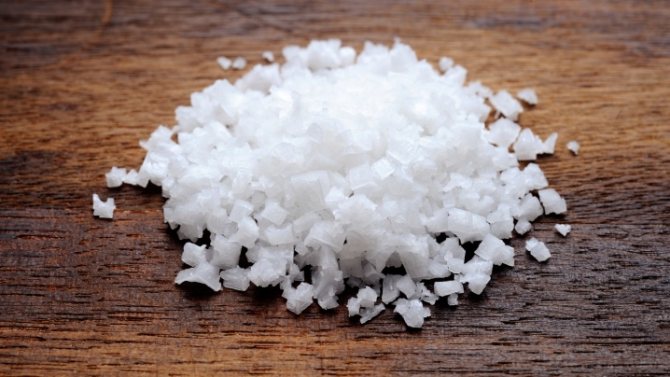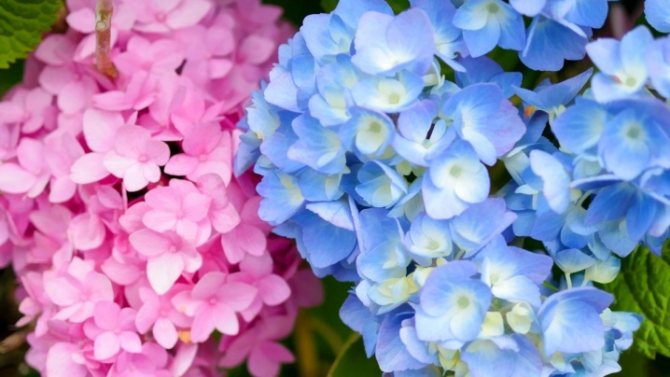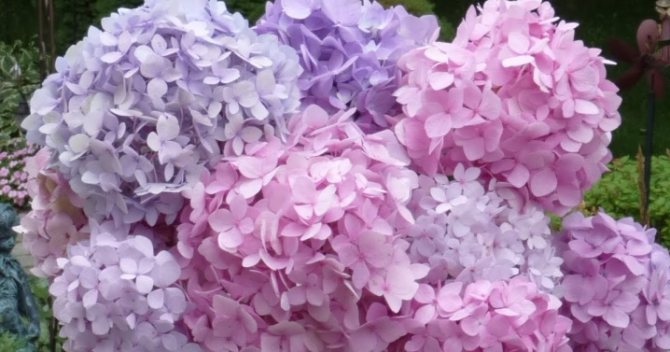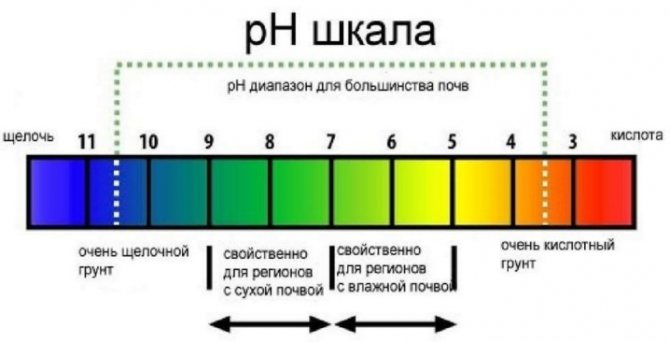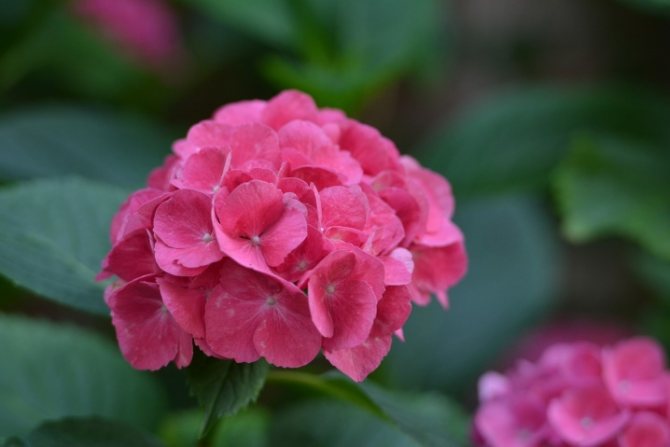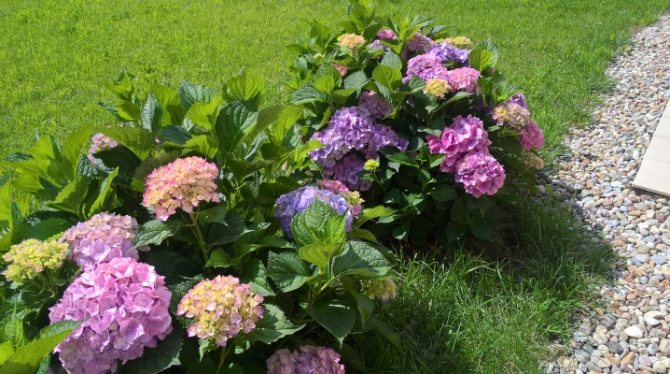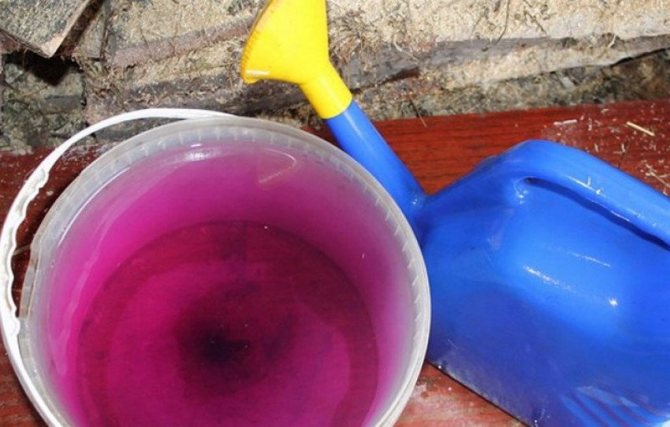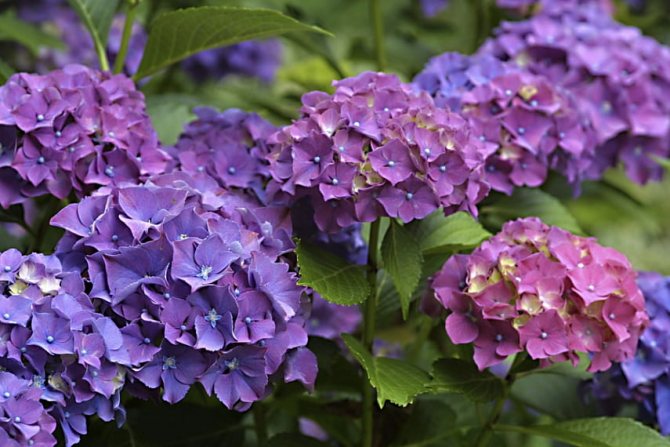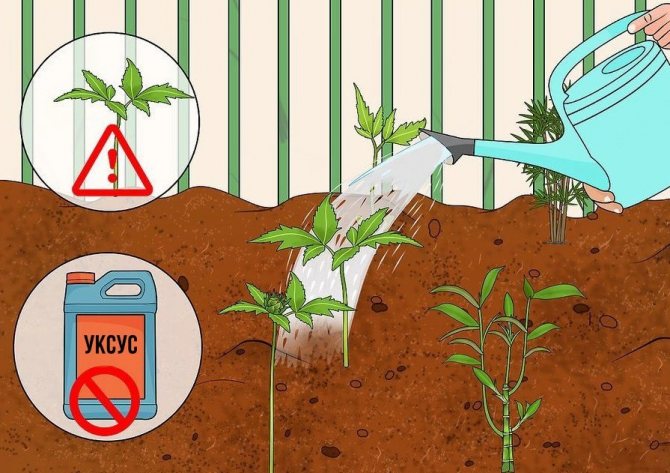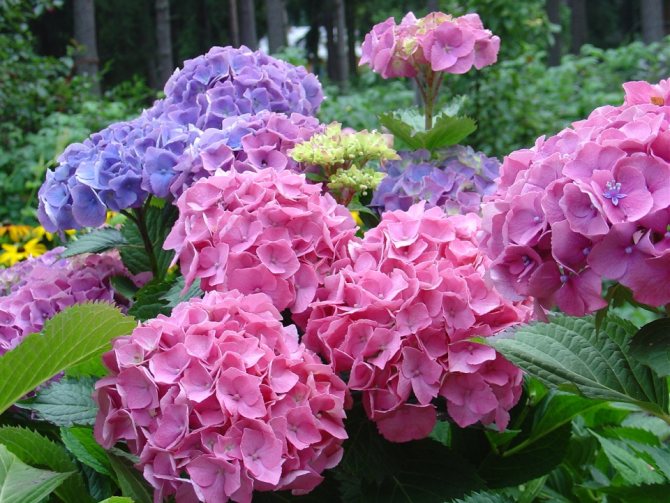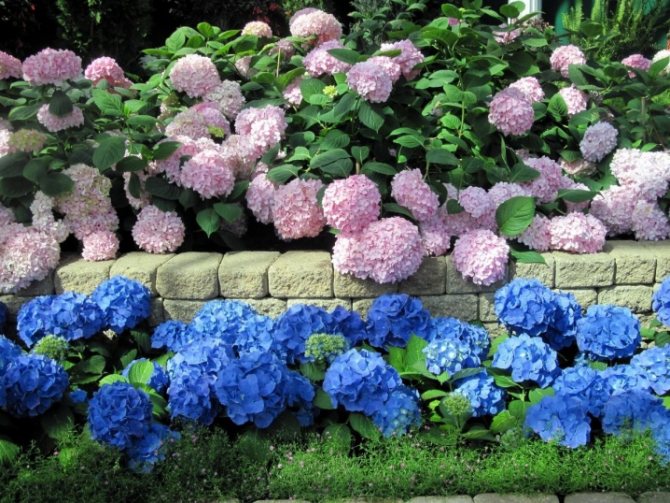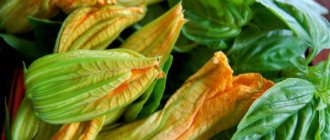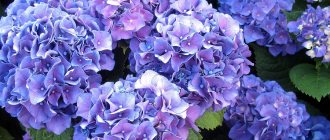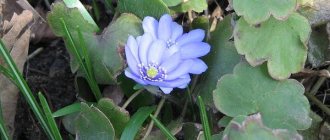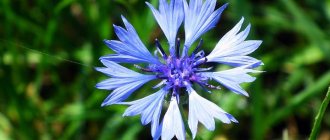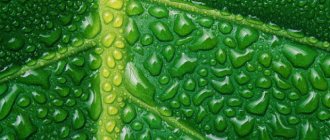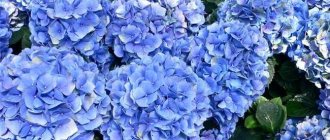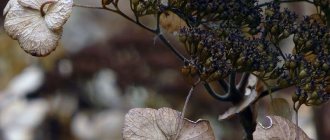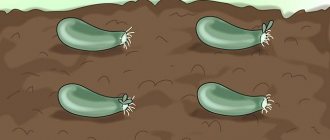Do you want your garden to be fragrant and delight you with long flowering? Then you need to settle there the recognized garden beauty Hortense, named in honor of the princess of the Roman Empire. This perennial shrub will delight you from July to September with its globular inflorescences, which at first have a greenish tint, then at the very peak of flowering turning into a bright white color, slightly yellowing by autumn. And if you plant a large-leaved, or garden, hydrangea, you can achieve pinkish or bluish hues. Let's try to figure out how to change the color of a garden hydrangea.
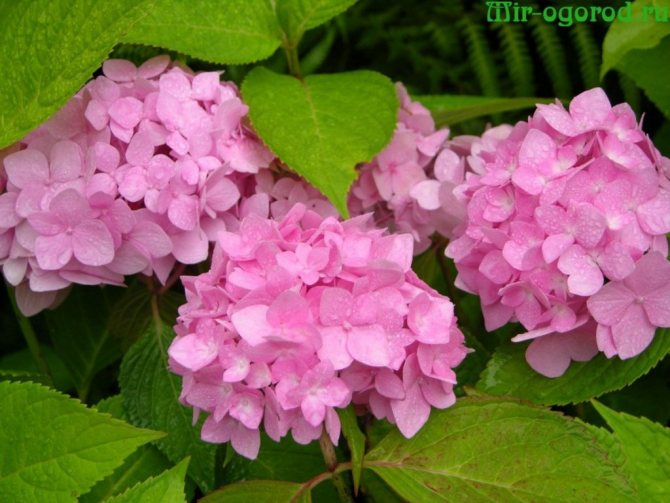
Hydrangea varieties that can change color
The most popular types of this plant are: paniculate, tree-like, garden and oak-leaved. Any of these types of hydrangea has a stunning appearance, but only the garden hydrangea can change its color. Let's consider this view in more detail.
Most often, this type of hydrangea can be found under the name large-leaved. A shrub of this species grows up to one and a half meters, on average, but it also occurs up to 1.8 meters high. The plant has a spherical shape. The main distinguishing feature of these bushes is the bright emerald color of the foliage, which, in addition, is quite large and has the shape of an oval. There are notches along the edges of the leaves. The inflorescences are quite large, have a diameter of about 20 centimeters. The shoots of this plant become woody in about a year. Due to this fact, large-leaved hydrangea requires insulation for the winter season. But a big plus is that now there are dwarf varieties of this shrub, intended for growing at home.
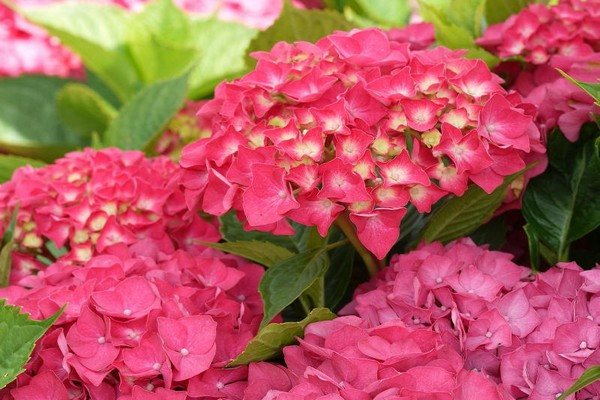

The main and very important feature of this plant is that it can grow on any kind of soil, even in acidic, slightly acidic, alkaline or neutral. Some varieties of garden hydrangea are able to change their shade of inflorescences due to a certain level of acidity of the earth, as well as the presence of aluminum metal in the soil. The color changes due to the action of pigments - anthocyanins, as these pigments react to the level of acidity of the earth. In addition to this, there is another pigment substance in these colors - this is delphinidin-3-monoglycositis. He also has a reaction to the composition of the soil for growing hydrangeas, including the presence of aluminum in the soil. If you want to see a blue hydrangea in your garden, then you should purchase varieties for growing such as Blue Wave, Endless Summer, Renata Steiniger, Masya and some others. These varieties are distinguished by a rather long flowering time, the first inflorescences can be seen in the month of July and admire this excellent view until the very moment of the winter frost.
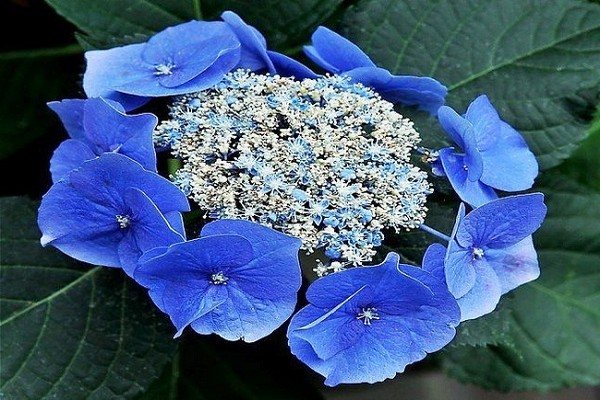

Reasons for the appearance of green flowers
When hydrangea blooms paniculate, large-leaved and tree-like
A green tint may appear on the buds as a result of external factors.
Natural causes
Some varieties of white hydrangeas tend to change the shade of the inflorescences. Treelike hydrangeas form green inflorescences at the beginning of flowering. Before figuring out the reason why hydrangea has green flowers, carefully observe the plant.
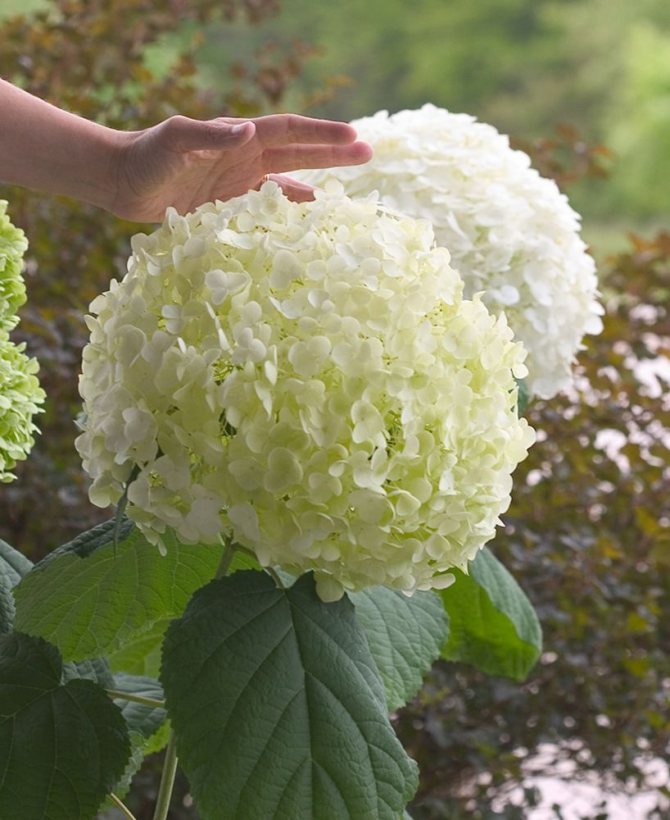

There are natural reasons for the color change of inflorescences.
Hydrangea sometimes blooms green in adverse weather conditions. These include:
- Frequent rains - with prolonged precipitation, beneficial nutrients are washed out of the soil.
- Prolonged droughts - dry weather negatively affects the development of shrubs. Most often, the inflorescences are deformed, the brightness and shade of the buds are corrected.
After normalization of weather conditions, the problem disappears. Failure to follow simple grooming rules is the main explanation why hydrangea flowers turn green. These errors include:
- Improper watering. Although the plant prefers moist soil, it is not recommended to use a large amount of liquid. The soil is moistened as the soil dries. Insufficient watering can negatively affect the culture. Lack of moisture leads to abnormal development of the flower.
- Lack of dressing. Targeted types of fertilizers should be used. Some nutrients increase or decrease the acidity of the soil, resulting in a color change.
In some cases, the buds can turn green as a result of the attack of pests. In this case, the flower weakens and does not form healthy buds. The bush may not bloom at all.
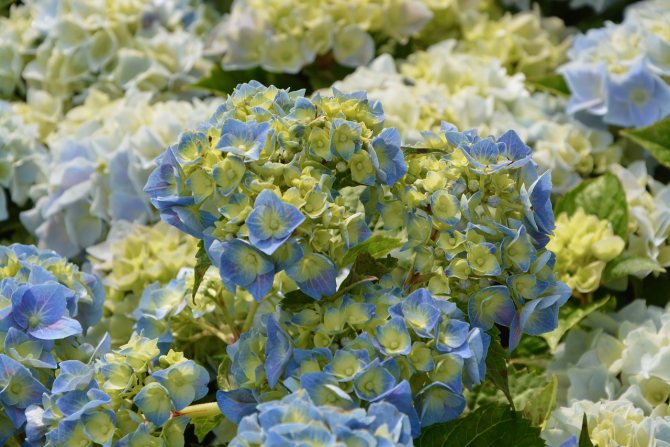

Change in the shade of buds as a result of exposure to weather
Watering procedure for blue hydrangea
The most common question of gardeners is: how to water a hydrangea so that it changes its color to a blue tint? It is a well-known fact that the blue color is influenced by aluminum. Therefore, it will be natural to ensure the presence of this metal in the ground to change the color of the plant. It is worth noting one important detail: it is absolutely impossible to change the color of the already formed flowers.
All procedures associated with a change in shade occur in early spring, or at the time of planting. Moreover, it is necessary to use such forms of substance so that they can easily penetrate the soil and be absorbed into the roots of the plant. Therefore, aluminum sulfate is most often used, which dissolves in the irrigation liquid. This is done like this: 25-25 grams of aluminum sulfate is dissolved in one ten-liter bucket. You need to water the plant with such a solution, and two such buckets of mixture are left for one bush. You can also use the dry substance of aluminum sulfate. To do this, it is buried in the ground near the bush, about 250 grams per half square meter. After the completion of this action, the soil is abundantly watered and mulch is spread, in the form of dry grass, coniferous needles or sawdust.
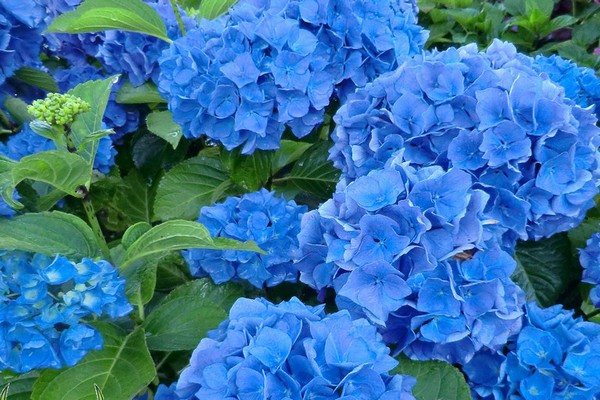

Burnt alum for this plant will be a good remedy. They are presented as volcanic minerals. They contain alkaline potassium and aluminum. Simply put, it is potassium aluminum sulfate. There is also another type of this substance - this is potassium alum for these shrubs. In principle, it is the same sulfate, but with water molecules. Outwardly, this substance looks like a white powder from crystals. It dissolves very well in liquids. Both of these substances have the same application, but differ in solubility in liquid (burnt ones dissolve worse).
To use alum for this shrub, you need to: dissolve 15 grams of alum in five liters of liquid, and as an option, bury the dry powder around the root of the plant, then the consumption will be about 150 grams per half square meter. It should be remembered that the procedure for adding aluminum to the soil is required every 2-2.5 weeks with the arrival of the spring period. At the moment when the inflorescences begin to change their shade to blue, this procedure should be stopped for a certain period of time.
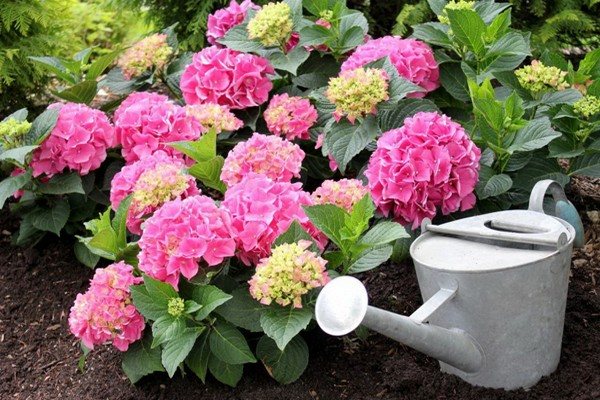

Fertilization
How to propagate hydrangea by cuttings in summer
There should also be a high-quality feeding of the flower culture.What is the best way to water the garden blue hydrangea? Complex mixtures should be taken such where the main element is potassium. Nitrogen is allowed, but in small quantities.
Additional Information! A spectacular flower should not receive phosphorus-containing dressings, since phosphorus prevents the metal from decaying in the soil. Accordingly, aluminum will not get into the plant.
Effect of watering on a flower
Translated from Greek, hydrangea means a vessel of water. And this is not accidental at all. After all, the main rule of care is watering procedures, which are performed every three days throughout the season. Watering is done only with settled water, in the amount of 30-40 liters per adult shrub. In dry weather, the number of watering is increased, but just do not allow an excess of moisture, otherwise this can also adversely affect the condition of the plant, this can lead to decay of the roots and infection of diseases of a fungal nature.
Indicator of acidity of the earth


The change in the shade of flowers in hydrangea is influenced not only by the presence of aluminum in the earth, but also by the indicator of the level of acidity of the earth. For this plant to bloom with a blue color, it is required that the pH indicator be at least 5.5. Based on this, we can conclude that the acidic soil gives the inflorescences a blue tint. With an acidity index of about 5.5-7, that is, with neutral and slightly acidic soil, the inflorescences will be of a light shade. With alkaline soil, when the indicator is above 7, the flowers acquire a pink color. Therefore, it is very important to determine the acidity of the soil for cultivation before dyeing this plant.
There are several methods for determining the acidity of the earth, these are:
- The folk method, with the help of crushed chalk. To do this, take one spoonful of garden soil and mix with 2.5 tablespoons of warm water. Add half a teaspoon of crushed chalk to this mixture and mix. Further, it is poured with a narrow neck bottle, and a rubber fingertip is put on it. At the same time, there should be a minimum of air in the bottle. Shake this mixture well and leave for 15 minutes. When you inflate the fingertip, it follows that the ground in the area is acidic. When a small amount of air appears in the fingertip, it follows that the soil is slightly acidic. Well, if nothing happened to the fingertip, then this may be a consequence of neutral ground.
- In any garden store, special pieces of paper are now sold, with detailed instructions for them. The papers are painted in a different shade, each corresponding to its own level of acidity. New pieces of paper are yellow or neutral in color. To perform this procedure with pieces of paper, you need to take one spoonful of soil and 4 tablespoons of water, and put a piece of paper into this mixture.
- Using the device. With this device you will be able to determine the acidity level most accurately, but this device is not cheap.
- With the help of weeds. There is one fact that with acidic soil fern, dandelion, cornflowers, plantain, sedge and chamomile grow well. Sow thistle, nettle, quinoa, shepherd's purse likes to grow on neutral soil, and at a level of more than 7, euphorbia, chicory, thyme and mustard grow well.
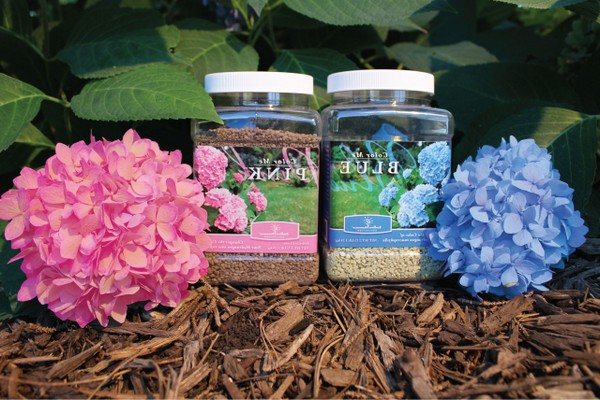

To change the color of the plant to blue, the soil must be oxidized. The acidity index should be 4-5.5. At a lower rate, there will be a negative impact on the plant. A low figure is very important, because the aluminum with which the plant is painted is best absorbed by the hydrangea in acidic soil. The soil acidification procedure is carried out in the area near the bush. It is required to oxidize a layer of soil approximately 30 centimeters. If you have not yet planted a plant, but are only planning, then the soil intended for planting in the planting hole is oxidized. For the oxidation procedure, peat or fresh sawdust is used.Well, if you need to make the soil of the planted shrub acidic, then acetic or citric acid is used. To do this, dissolve two tablespoons of citric acid in 10 liters of water, and if you decide to use 9 percent vinegar, then you need 100 grams also for 10 liters of liquid. Such methods are used not once during the summer, but several times, starting with the arrival of the spring season. To oxidize the soil, mulch made from sawdust, bark, peat or pine needles will help you.
How to turn a white hydrangea shade into blue
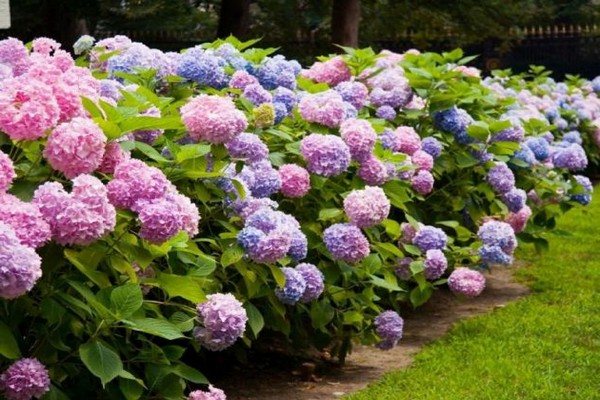

It should be noted right away that varieties with snow-white inflorescences cannot change their color. This can only be done by varieties with a color of flowers of light pink and blue-whitish. Therefore, when they talk about changing the color from white to blue, they mean light or pale color of flowers, the shade of which should change to blue.
In order to do this, you need:
- Determine the level of soil acidity with the arrival of spring. The easiest option for this would be to turn to a special device for help.
- We then begin to oxidize the soil. Home remedies such as citric acid or acetic acid can be used for these purposes. Near the trunk of the plant, mulching is carried out with needles, sawdust, or high-moor peat.
- The soil should be treated with alum or aluminum sulfate every 2-2.5 weeks.
- A very important condition for growing this plant is watering. Therefore, the shrub is watered every three days, and it should be noted that about 30 liters of liquid is consumed per adult bush.
- The plant should be fed several times before the flowering period. For these purposes, potassium-containing dressings with a small amount of nitrogen are used.
What to do
When the gardener has figured out why the hydrangea blooms greenish, you can take appropriate action.
Make adjustments to the care of the shrub
Why garden or indoor jasmine does not bloom and what to do
In caring for a beauty, it is important to restore the watering regime, provide her with proper lighting and the correct composition of fertilizer.
Note! After the rains, the bush can also be fed with complex nutrients.
Care advice
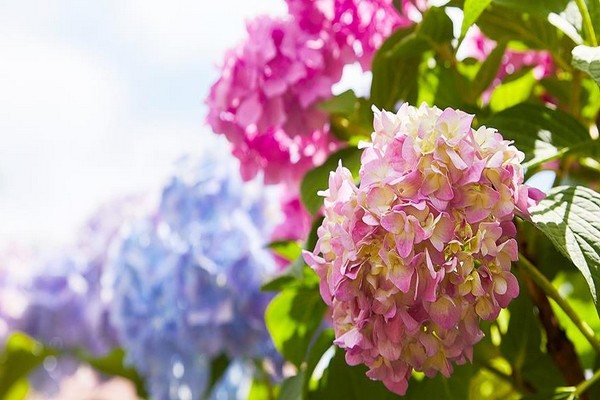

After all the manipulations, when you managed to get the desired shade, you should maintain it. Therefore, make sure that the acidity indicator of the soil is 4-5, and also continue the irrigation procedures with the aluminum content, but only by reducing their amount. Experienced growers recommend not changing the color of the plant every year, since a rather sharp change in the acidity of the soil can cause stress in the shrub. We advise you to resort to such a method as planting several hydrangea shrubs on your site at once, differing in color. In order for this decorative shrub to have blue inflorescences, complex work needs to be done. Good and successful results can only be achieved with a continuous process. But if you did not succeed in changing the shade of the hydrangea from one time, then do not be upset. Remember, this plant is characterized as quite complex in terms of care features.

